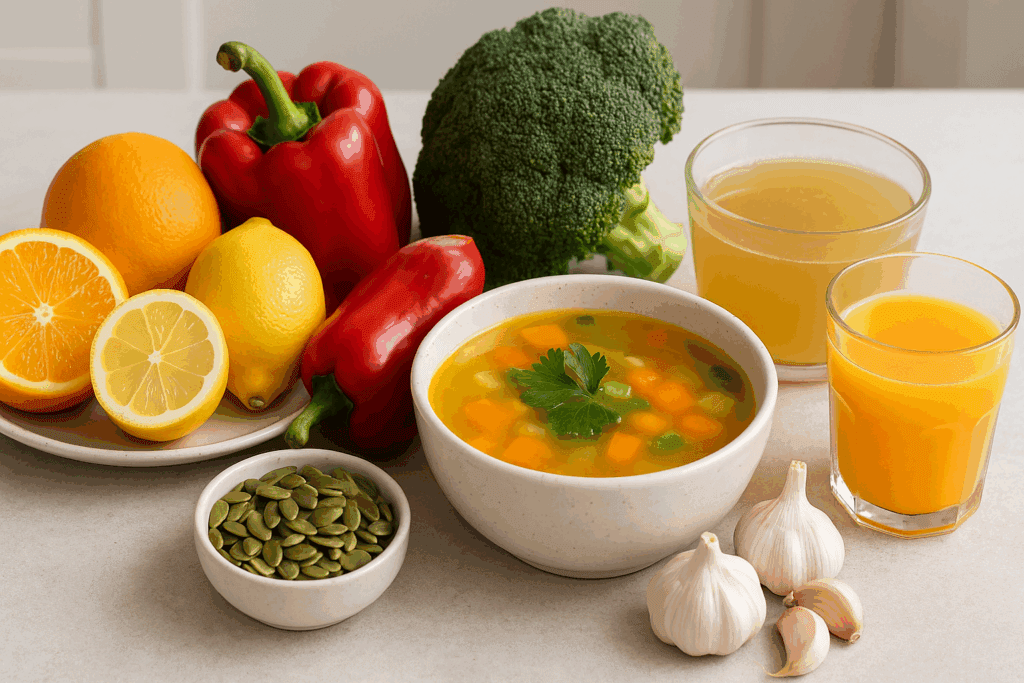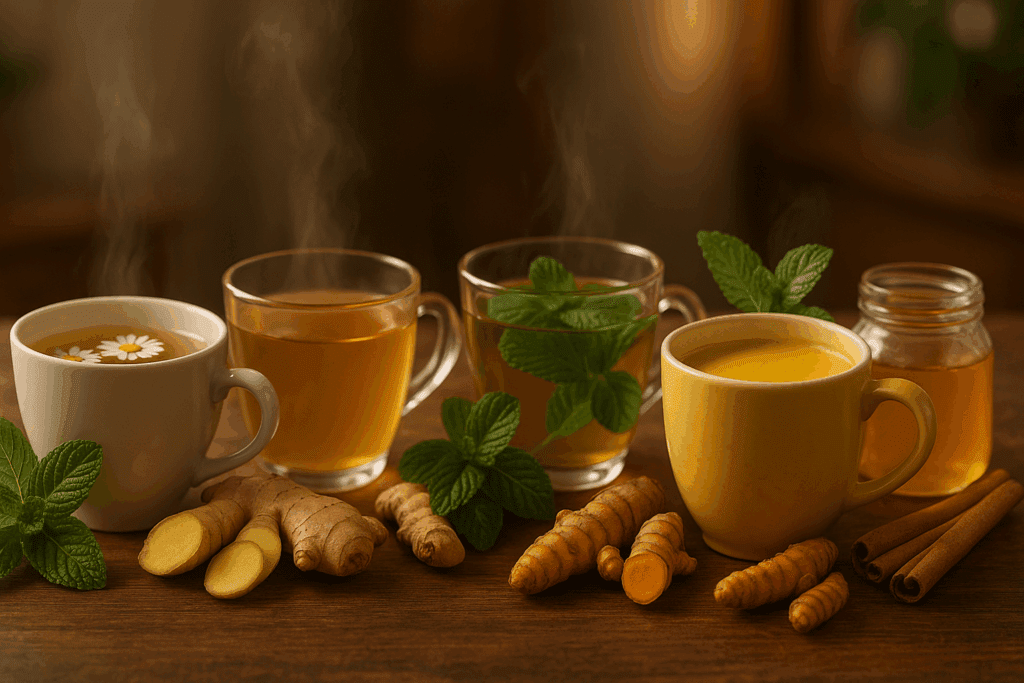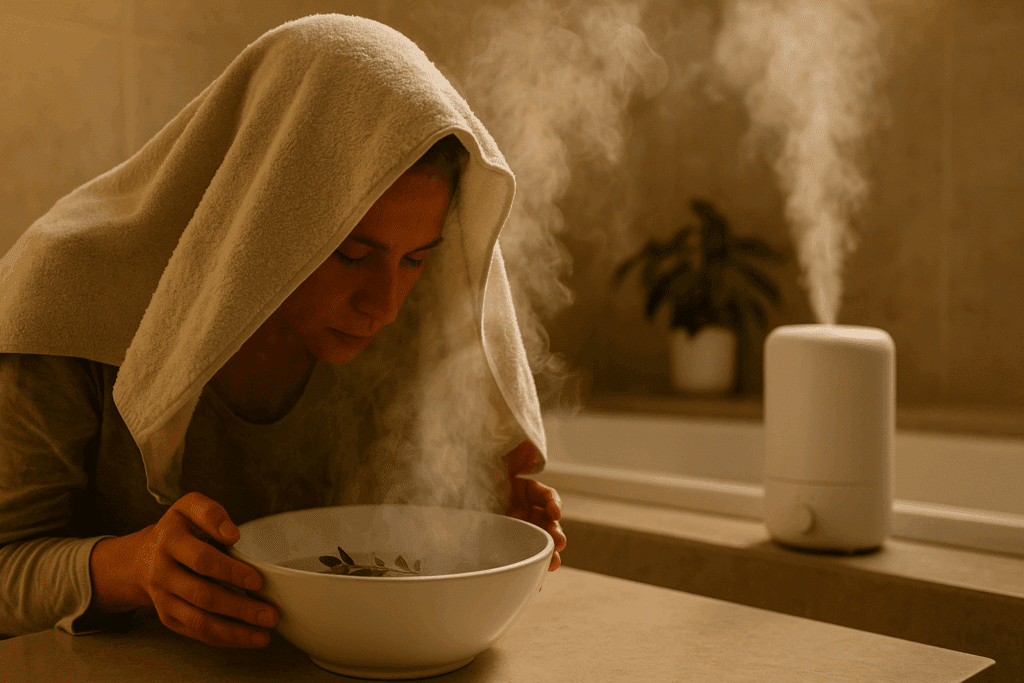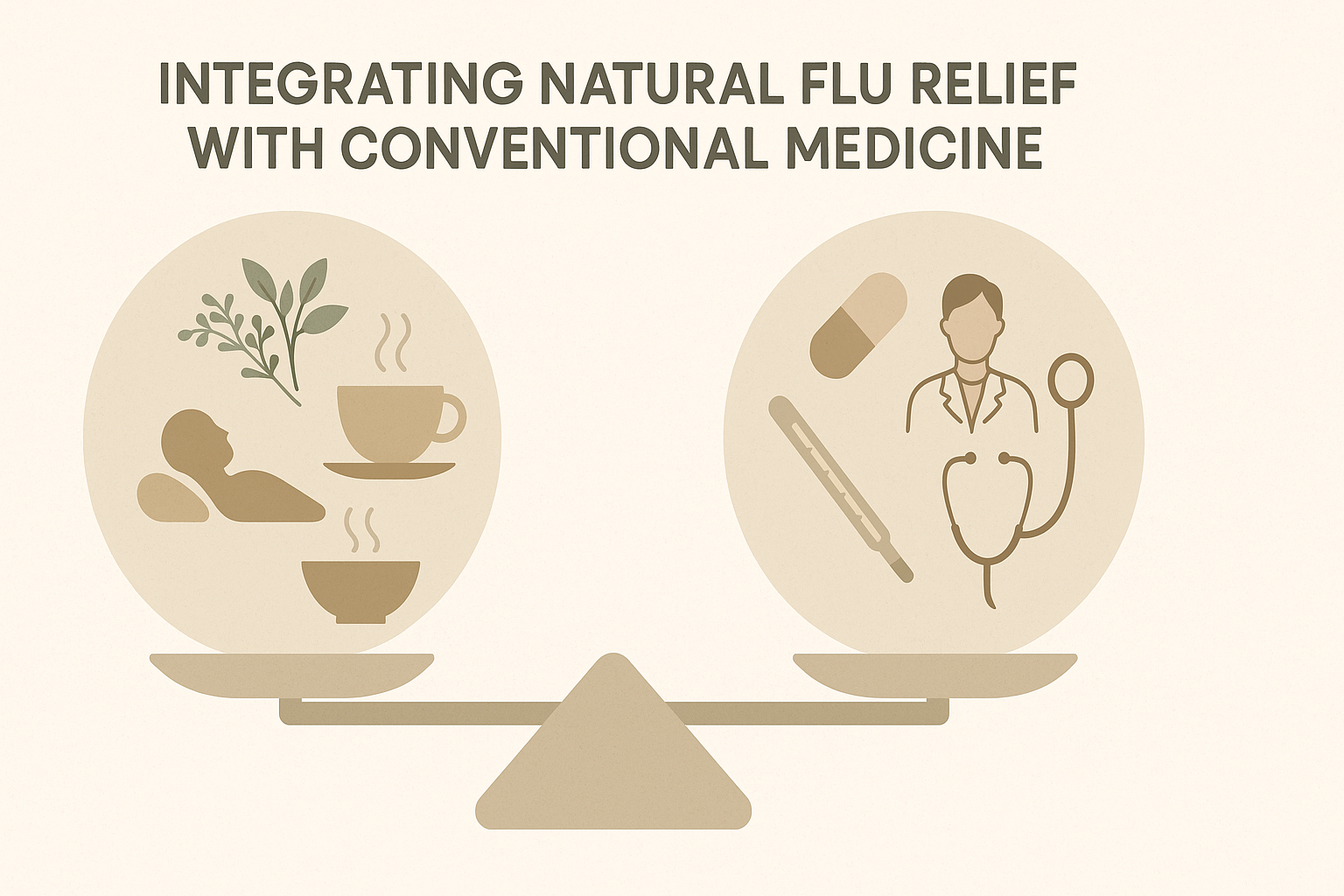Every year, as temperatures drop and flu season rears its head, many individuals seek ways to mitigate symptoms and recover faster without relying solely on over-the-counter medications. While pharmaceutical solutions can offer relief, there is a growing interest in evidence-based natural flu relief methods that support the body’s healing process while minimizing side effects. This approach, grounded in holistic principles and reinforced by traditional practices, empowers individuals to take control of their recovery through gentle, integrative means that are often overlooked in conventional flu care.
You may also like: Essential Tips for Prevention from Flu and Other Common Respiratory Infections

Understanding the Flu and Its Impact on the Body
Influenza, commonly referred to as the flu, is a contagious respiratory illness caused by influenza viruses. These viruses attack the nose, throat, and lungs, leading to symptoms such as fever, fatigue, body aches, sore throat, and cough. Although typically self-limiting in healthy individuals, the flu can be severe and even life-threatening in vulnerable populations, including the elderly, pregnant individuals, and those with chronic health conditions. Understanding how the flu impacts the body is crucial for selecting appropriate strategies for support and relief.
When the flu virus enters the body, it triggers an immune response aimed at neutralizing the threat. This immune activation results in inflammation, which, while necessary for healing, also contributes to many of the unpleasant symptoms. Fever, for example, helps kill the virus but can cause discomfort and dehydration. Similarly, increased mucus production is the body’s way of trapping and expelling viral particles, yet it can result in congestion and sinus pressure. Recognizing that many symptoms are manifestations of the body’s natural defense mechanisms underscores the value of supportive care that works in harmony with these processes.
The Role of Natural Flu Relief in Complementary Care
Natural flu relief strategies are designed to complement the body’s innate healing capabilities rather than suppress symptoms entirely. This distinction is critical, as symptom suppression alone may not address the underlying processes required for full recovery. Holistic flu interventions aim to support immune function, reduce inflammation gently, ease discomfort, and promote rest and hydration.
Moreover, natural flu relief emphasizes the use of time-tested remedies derived from plants, whole foods, and lifestyle modifications. These interventions often include the use of flu herbal remedies known for their antiviral, anti-inflammatory, and immune-modulating properties. While not a substitute for medical care in severe cases, these approaches can be profoundly effective in reducing the duration and severity of symptoms in mild to moderate infections.

Harnessing the Power of Flu Herbal Remedies
One of the most respected pillars of natural flu relief involves the use of flu herbal remedies that have stood the test of time across cultures. Herbs such as elderberry, echinacea, and licorice root are well-known for their flu-fighting abilities. Elderberry, in particular, has been studied for its antiviral properties and its ability to reduce the duration of flu symptoms when taken early in the infection. Echinacea, traditionally used by Native American healers, is valued for stimulating the immune system and improving the body’s resilience against viral invaders.
Licorice root, while less commonly discussed, has notable anti-inflammatory and soothing properties, especially useful for calming sore throats and dry coughs. Another often overlooked herb is andrographis, which research suggests can reduce fever, fatigue, and throat pain when used in the early stages of influenza. By incorporating these flu herbal remedies into one’s self-care routine, individuals can bolster their immune response naturally and potentially shorten the duration of their illness.
Many of these herbs are available as teas, tinctures, or capsules, offering flexibility for different preferences and levels of illness severity. It is crucial, however, to consult with a healthcare professional before starting any herbal regimen, especially for individuals with underlying health conditions or those taking prescription medications, as some herbs can interact with conventional treatments.

Supporting the Immune System Through Nutrition
In the context of holistic flu recovery, nutrition plays a vital role in ensuring the body has the resources it needs to combat infection and repair tissue. Foods rich in vitamins, minerals, and phytonutrients can significantly influence immune function and inflammation levels. Natural flu relief should include a dietary strategy centered on whole, nutrient-dense foods that nourish the body while reducing the burden on the digestive system.
Vitamin C, found abundantly in citrus fruits, bell peppers, and broccoli, is well-known for its immune-enhancing effects. It supports white blood cell function and helps reduce the severity of respiratory infections. Zinc, present in pumpkin seeds, legumes, and seafood, is another essential nutrient that supports antiviral immunity and tissue healing. Bone broth, long revered in traditional medicine, provides a combination of easily absorbed minerals, amino acids, and collagen to support mucosal tissues and hydration.
Hydration, while not always emphasized, is a cornerstone of natural flu relief. Fever and increased mucus production can lead to significant fluid loss, which in turn worsens fatigue, headaches, and congestion. Incorporating electrolyte-rich fluids such as coconut water, diluted fruit juices, and herbal teas can help maintain fluid balance and support detoxification.

Herbal Teas and Warm Liquids for Symptom Management
Sipping on warm herbal teas can provide both comfort and therapeutic benefits during flu recovery. Chamomile tea, known for its calming effects, can support better sleep and reduce anxiety often associated with illness. Peppermint tea acts as a mild decongestant and can soothe sore throats with its cooling menthol component. Ginger tea, with its warming properties, supports circulation, reduces nausea, and provides anti-inflammatory benefits.
Turmeric, often used in warm golden milk preparations, has powerful anti-inflammatory and antioxidant properties. Curcumin, the active compound in turmeric, has been shown to modulate the immune response and may help reduce the severity of flu symptoms. Including a pinch of black pepper can enhance curcumin absorption, maximizing its potential benefits.
These herbal beverages not only deliver direct flu-relief properties but also encourage hydration, which supports mucus thinning and detoxification. The warmth of the liquid helps loosen congestion, reduce chills, and provide a sense of comfort that can significantly improve the experience of being ill. Holistic flu care encourages the use of such natural tools to ease discomfort while aligning with the body’s recovery processes.
Rest, Sleep, and the Body’s Healing Mechanisms
Flu recovery requires significant physiological resources, and one of the most powerful tools for healing is sleep. During sleep, the body ramps up immune activity, releases growth hormones that repair tissue, and orchestrates a wide array of restorative processes. This is why fatigue is such a prominent feature of flu: the body is demanding rest so it can allocate energy toward fighting the infection.
Natural flu relief strategies must prioritize sleep as a therapeutic modality. Creating an environment conducive to rest is essential. This may involve darkening the room, reducing noise, limiting screen time before bed, and incorporating calming rituals such as meditation or aromatherapy. Essential oils like lavender and eucalyptus can be used in diffusers to enhance relaxation and support easier breathing.
Naps during the day should also be embraced, particularly if night sleep is disrupted due to coughing or congestion. Unlike some medications that may cause sedation without true restfulness, natural approaches to sleep encourage a deeper, more restorative sleep that genuinely supports immune recovery. Prioritizing this aspect of care is not merely a luxury but a necessity for a complete and efficient return to health.

The Role of Steam and Humidity in Respiratory Relief
Respiratory symptoms, including nasal congestion, sinus pressure, and cough, are among the most distressing aspects of the flu. Natural flu relief approaches often incorporate steam inhalation and humidity to address these symptoms. Inhaling warm steam helps to loosen mucus, soothe inflamed sinus tissues, and promote easier breathing. Adding a few drops of essential oils such as eucalyptus, tea tree, or thyme can enhance the antimicrobial and decongestant effects of the steam.
Humidifiers, especially in dry indoor environments, can help maintain optimal airway moisture. Dry air tends to irritate mucous membranes, increasing discomfort and prolonging the duration of respiratory symptoms. Maintaining a humidity level between 40% and 60% can provide noticeable relief and support mucociliary clearance, which is vital for clearing pathogens from the respiratory tract.
Hydrotherapy, including warm baths or showers, can also play a supportive role. The heat improves circulation, relieves muscle aches, and encourages relaxation. A bath infused with Epsom salts and essential oils provides a dual benefit: soothing the body physically while also creating a calming ritual that supports overall well-being. These water-based therapies underscore the importance of non-pharmaceutical interventions in managing symptoms and promoting comfort.

Strengthening Immunity with Holistic Flu Practices
A key component of natural flu relief is strengthening the immune system not only during illness but also as a preventive measure. A holistic flu strategy includes regular practices that build immune resilience over time. This may involve daily habits such as consuming probiotic-rich foods, engaging in regular moderate exercise, spending time in nature, and managing stress effectively.
Probiotics, found in fermented foods like yogurt, kefir, sauerkraut, and miso, support gut health, which in turn influences immune response. Approximately 70% of the immune system resides in the gut-associated lymphoid tissue (GALT), highlighting the importance of microbial balance. Chronic stress, on the other hand, weakens immunity by elevating cortisol levels, which suppress immune function over time. Incorporating mindfulness practices, yoga, or creative expression can mitigate this impact.
These preventive strategies form the foundation of long-term immune strength, enabling the body to respond more effectively when exposed to influenza viruses. Rather than relying solely on reactive treatments, holistic flu care encourages a proactive approach that nurtures the body’s defense systems continuously, reducing the likelihood and severity of future illnesses.

Integrating Natural Flu Relief with Conventional Medicine
While natural flu relief offers valuable tools for managing mild to moderate cases, it is essential to recognize when medical intervention is necessary. High-risk individuals or those experiencing severe symptoms should consult a healthcare provider. Antiviral medications like oseltamivir (Tamiflu) may be appropriate in certain cases, particularly when initiated within the first 48 hours of symptom onset. Integrative care respects the role of conventional medicine while enhancing outcomes through supportive natural interventions.
Open communication with healthcare professionals about the use of herbal remedies, supplements, and home therapies ensures safety and prevents potential interactions. The goal of integration is not to replace one system with another but to harness the strengths of both. By combining the precision of biomedicine with the nurturing aspects of holistic flu care, patients receive comprehensive support that addresses the full spectrum of their needs.
This integrative approach also fosters patient empowerment. Individuals become active participants in their healing journey, gaining insight into how daily choices affect their immune health. Over time, this mindset shift can lead to healthier lifestyles and improved resilience, not only against the flu but against other common conditions and everyday ailments.
When to Seek Medical Attention During the Flu
While natural flu relief methods are generally effective for mild cases, it is imperative to recognize red flags that may indicate complications requiring urgent care. Difficulty breathing, chest pain, persistent high fever, severe dehydration, and confusion are all signs that the flu has progressed beyond the scope of home treatment. In children, warning signs may include difficulty waking, bluish lips or skin, and poor feeding.
These symptoms may indicate the development of secondary bacterial infections such as pneumonia or the worsening of pre-existing conditions like asthma or heart disease. Timely intervention in these cases can be lifesaving. Thus, natural remedies should never replace sound clinical judgment. Instead, they should be viewed as part of a continuum of care that includes the ability to escalate treatment when appropriate.
Public health guidelines also recommend that individuals at higher risk receive annual flu vaccinations, which provide protection against the most common circulating strains. Even in vaccinated individuals, natural flu relief strategies can help alleviate symptoms and support recovery in the event of breakthrough infections. The key is balance, awareness, and timely response to changes in health status.
Frequently Asked Questions About Holistic Flu Support and Natural Flu Relief
How does emotional well-being influence recovery with natural flu relief?
Emotional health can significantly impact the effectiveness of natural flu relief methods. When individuals experience high levels of stress or emotional turbulence during illness, cortisol levels rise, which may suppress immune function and delay recovery. Engaging in activities that reduce stress—such as listening to calming music, journaling, or spending time in nature—can create a more favorable internal environment for healing. Additionally, maintaining a positive outlook and feeling supported by loved ones has been shown to boost resilience and lower the perception of symptom severity. In the context of holistic flu care, addressing emotional well-being is not a side consideration but a crucial element of a truly integrative approach.
Are there specific flu herbal remedies that target post-viral fatigue?
Yes, several flu herbal remedies may assist with lingering fatigue that often persists after the acute phase of the flu. Adaptogens like Rhodiola rosea and ashwagandha are known for their ability to support adrenal health and restore energy levels without overstimulation. Eleuthero, commonly referred to as Siberian ginseng, is another herbal option that enhances physical stamina and helps the body adapt to stress post-illness. These herbs are particularly helpful for individuals experiencing what’s known as “post-viral syndrome,” characterized by prolonged tiredness and reduced cognitive function. While not cures, these natural aids gently help reestablish baseline energy and improve day-to-day functioning during flu recovery.
What are the social benefits of using holistic flu approaches within families or communities?
Using holistic flu strategies in a communal setting can foster a sense of connectedness, especially when shared rituals like making herbal teas, diffusing essential oils, or preparing nutrient-rich broths become part of family routines. These practices encourage mindfulness, cooperation, and shared responsibility for well-being. Within families, educating children about natural flu relief empowers them with lifelong tools for self-care. In community settings, workshops or shared herbal gardens can promote health literacy and resource sharing. The communal aspect of holistic flu care goes beyond symptom management; it builds resilience, enhances emotional bonds, and reinforces a culture of proactive wellness.
Can natural flu relief support be tailored to support older adults more effectively?
Older adults often face unique challenges during flu recovery, including decreased immune responsiveness and coexisting chronic conditions. Natural flu relief can be adjusted to meet their specific needs through gentle interventions that avoid overly stimulating immune responses. For example, elderberry syrup in lower doses, soothing teas like linden or chamomile, and warm compresses for joint pain offer supportive care without adverse effects. Emphasizing nutrient-dense soups rich in collagen and easily digestible proteins can help meet their dietary needs during recovery. Importantly, natural approaches for seniors should always be used under the guidance of a healthcare provider to avoid herb-drug interactions and ensure safety.
How can flu herbal remedies support individuals with autoimmune conditions?
Individuals with autoimmune disorders must approach flu herbal remedies with caution, as certain immune-stimulating herbs—like echinacea or astragalus—may exacerbate their conditions. However, not all herbal options act by directly stimulating immunity. Instead, some herbs like turmeric and reishi mushroom modulate immune responses and help regulate inflammation without provoking an overactive immune reaction. These can offer supportive effects during viral infections without undermining immune balance. Consulting with an integrative physician or herbalist is essential in these cases to customize a plan that aligns with the individual’s autoimmune profile while still delivering the benefits of holistic flu support.
How does gut health influence the effectiveness of natural flu relief strategies?
Emerging research highlights the significant role of gut microbiota in immune system regulation, making gut health a cornerstone of natural flu relief. A well-balanced gut microbiome supports effective immune signaling, enhances the production of antiviral compounds, and can even influence how the body responds to flu vaccines. Including prebiotic foods like garlic, leeks, and asparagus, as well as probiotic-rich fermented items such as kefir and kimchi, can reinforce the gut’s role in flu defense. For those recovering from the flu, replenishing beneficial gut flora can also mitigate digestive issues sometimes triggered by illness or medication. Overall, gut health is deeply interconnected with systemic immunity and should be prioritized in any holistic flu recovery plan.
What are some emerging trends in the science behind holistic flu care?
The science of holistic flu care is expanding rapidly, with integrative medicine researchers now exploring how traditional practices align with molecular biology and immunology. One trend is the study of plant-based compounds—such as quercetin, found in onions and apples—which may interfere with viral replication. Another focus area is the therapeutic use of heat therapies like infrared saunas to improve circulation and detoxification. Additionally, personalized botanical protocols based on genetic or microbiome testing are beginning to surface in clinical settings. These innovations reflect a move toward precision-based holistic flu solutions that combine ancestral knowledge with cutting-edge science to optimize outcomes.
Exploring Seasonal Adaptations in Natural Flu Relief Strategies
Seasonal shifts impact how natural flu relief strategies are implemented, especially in temperate climates. In colder months, warming herbs such as cinnamon, clove, and ginger become more prominent in flu-supportive remedies due to their ability to stimulate circulation and alleviate cold-related symptoms. In spring and early autumn, lighter, cleansing herbs like nettle or dandelion may be introduced to aid lymphatic flow and seasonal detoxification. Adjusting herbal approaches to match the body’s seasonal needs can enhance their effectiveness and harmonize the immune system with environmental rhythms. This dynamic aspect of holistic flu care respects the natural ebb and flow of seasonal energy, which is often ignored in conventional treatment models.
How does lifestyle synchronization support holistic flu recovery?
Synchronizing lifestyle habits with circadian rhythms can amplify the effectiveness of holistic flu strategies. Practices like maintaining consistent sleep-wake cycles, limiting artificial light exposure after dusk, and eating meals during daylight hours help regulate hormones such as melatonin and cortisol, which influence immune function. Morning sunlight exposure boosts vitamin D levels, a crucial factor in flu prevention and recovery. Movement patterns also play a role; gentle stretching or short walks during recovery periods enhance lymphatic drainage and oxygen delivery. These subtle yet powerful behavioral alignments enhance the body\u2019s self-regulating mechanisms, reinforcing the effectiveness of both flu herbal remedies and other natural interventions.
Can natural flu relief practices support long-term immunity beyond seasonal illness?
Yes, many components of natural flu relief—when used consistently—contribute to long-term immune health. Regular use of adaptogens, adequate sleep, mindfulness practices, and a phytonutrient-rich diet all promote systemic resilience. Over time, these habits reduce chronic inflammation, stabilize the stress response, and improve the body\u2019s ability to neutralize pathogens early. Unlike symptom-targeted interventions, holistic flu strategies focus on building a robust internal environment where disease is less likely to take hold. This proactive approach not only reduces the incidence of flu but may also decrease the frequency and severity of other common respiratory infections. The continuity of such habits ensures that immune vitality becomes a baseline state rather than a reactive measure.
Practical Innovations and Lifestyle Tools for Natural Flu Relief in Modern Homes
Modern tools are enhancing how people apply natural flu relief techniques within the home environment. Smart humidifiers with real-time air quality sensors, for instance, can maintain optimal indoor humidity levels to support respiratory function. Infrared heating pads and targeted light therapy devices are now being used to ease body aches and boost mitochondrial function during recovery. Additionally, herbalist-formulated teas and tinctures are available through digital platforms, making access to high-quality flu herbal remedies more convenient than ever. These innovations align with the principles of holistic flu care, merging technology with tradition to optimize comfort and healing in contemporary lifestyles.
Final Thoughts on Holistic Healing and Natural Flu Relief
Natural flu relief offers a powerful, evidence-informed complement to conventional treatments, emphasizing the body’s inherent capacity to heal. By integrating time-honored flu herbal remedies, nutrient-dense foods, rest-enhancing rituals, and supportive therapies like steam inhalation and hydration, individuals can significantly reduce the severity and duration of flu symptoms. These strategies do not rely on suppressing symptoms but rather on working with the body’s natural defenses, aligning perfectly with the principles of holistic flu care.
As our understanding of integrative medicine continues to grow, the relevance of natural flu relief becomes even more apparent. Beyond symptomatic care, these practices foster a proactive mindset that strengthens immunity, reduces vulnerability to future illness, and enhances overall quality of life. For anyone seeking a gentler, more personalized approach to flu management, natural flu relief presents a safe, effective, and empowering path forward.
Further Reading:
Cold and Flu: Home Remedies, Natural Treatments, & When to Seek Help from VirtualER
Natural Flu Remedies That Help Get Rid of Flu Symptoms at Home


